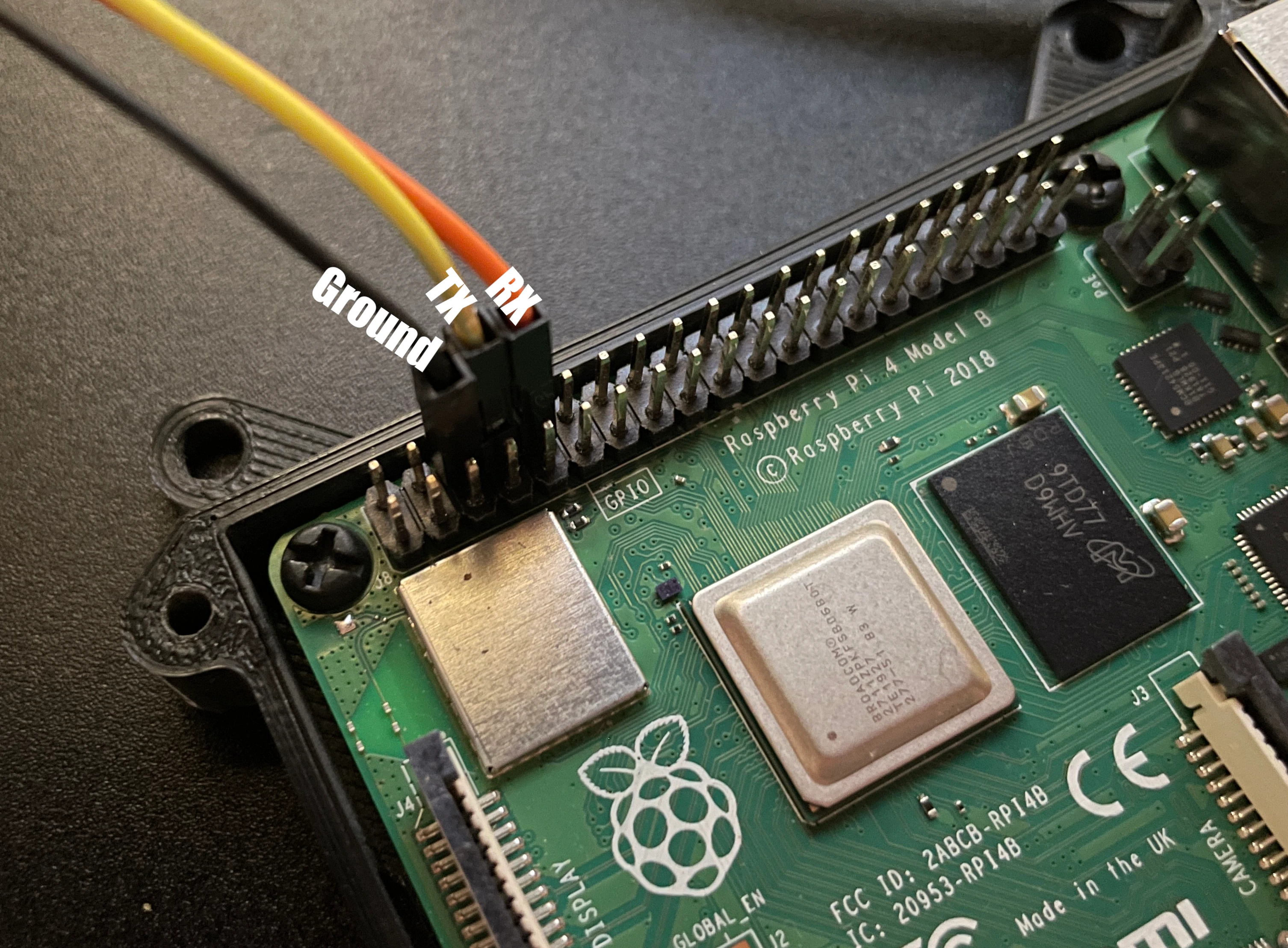How Do I Log Into Pi Remotely? Unlock The Secrets To Remote Access
Imagine this: You're chilling at a café miles away from home, sipping your favorite latte, but you suddenly need access to your Raspberry Pi at home. Panic sets in because you don't have it with you. Well, guess what? You don't need to freak out! By learning how to log into Pi remotely, you can access your Raspberry Pi from anywhere in the world.
Remote access to your Pi opens up a whole new world of possibilities. Whether you're a tech enthusiast, a developer, or just someone who loves tinkering with gadgets, knowing how to log into Pi remotely is an essential skill. It's like having a superpower that lets you control your device from afar.
But hold up—before we dive deep into the how-to's, let's break it down for you. Logging into your Pi remotely isn't as complicated as it sounds. With a few simple steps and the right tools, you'll be up and running in no time. So, buckle up, grab your favorite snack, and let's get started!
- Aditi Mistry Nude Videos Debunking Myths And Understanding The Truth
- Exclusive Content Leaks The Hype The Risks And The Impact
Why Should You Learn How Do I Log Into Pi Remotely?
Remote access to your Raspberry Pi isn't just cool—it's practical. Think about it: you can monitor security cameras, manage servers, or even troubleshoot issues from the comfort of your couch or halfway across the globe. It's like having your own personal assistant that works 24/7.
For instance, if you're running a home automation system powered by your Pi, you can check on your smart home devices anytime, anywhere. Or maybe you're a developer who needs to tweak some code on your Pi-based server. Remote access makes life easier and more efficient.
Plus, it's a great way to impress your friends and family. Picture this: you're at a family gathering, and someone asks, "What's a Raspberry Pi?" You can confidently reply, "It's a tiny computer I can control from anywhere!" Boom—mind blown.
- Divine Flaws The Untold Story Behind Diva Flawless Xxx Viral
- Adity Mistry Sexy Video The Viral Sensation Unpacked
What You Need to Log Into Pi Remotely
Before we jump into the nitty-gritty, let's go over the essentials you'll need to log into your Pi remotely. It's like packing for a trip—you don't want to forget anything important.
- Raspberry Pi: Duh! This is the star of the show. Make sure it's up and running with the latest version of Raspberry Pi OS.
- Static IP Address: Assigning a static IP address to your Pi ensures it stays consistent, making it easier to connect remotely.
- SSH (Secure Shell): This is your secret weapon for secure remote access. Think of it as a secure tunnel between your device and your Pi.
- Internet Connection: Both your Pi and the device you're using to connect need to be online. No internet, no remote access—it's that simple.
Once you've got all these ducks in a row, you're ready to rock. But wait, there's more! Let's talk about the tools you'll need to make this magic happen.
Tools and Software for Remote Access
Now that you know what you need, let's talk about the tools and software that'll make your remote access journey a breeze. There are a ton of options out there, but here are the top picks:
SSH Clients
SSH clients are your best friends when it comes to remote access. They allow you to securely connect to your Pi from any device. Some popular options include:
- Terminal (Mac/Linux): Built-in SSH support makes this a no-brainer for Mac and Linux users.
- PuTTY (Windows): A lightweight and easy-to-use SSH client for Windows users.
- Mobile Apps: If you're on the go, there are plenty of SSH apps available for both Android and iOS.
Port Forwarding
Port forwarding is like giving your Pi a direct line to the outside world. It allows you to access your Pi from outside your local network. While it might sound intimidating, it's actually pretty straightforward. Just log into your router's admin panel and set up port forwarding for SSH (usually port 22).
Step-by-Step Guide to Log Into Pi Remotely
Alright, let's get down to business. Here's a step-by-step guide to help you log into your Pi remotely:
Step 1: Enable SSH on Your Pi
Before you can access your Pi remotely, you need to enable SSH. Here's how:
- Boot up your Raspberry Pi and log in.
- Open the terminal and type
sudo raspi-config. - Select "Interfacing Options" and enable SSH.
- Reboot your Pi to apply the changes.
Step 2: Assign a Static IP Address
A static IP address ensures your Pi always has the same address, making it easier to connect remotely. Here's how to set it up:
- Open the terminal and type
sudo nano /etc/dhcpcd.conf. - Add the following lines at the end of the file:
- Save and exit the file.
- Reboot your Pi to apply the changes.
interface eth0 static ip_address=192.168.1.100/24 static routers=192.168.1.1 static domain_name_servers=192.168.1.1
Step 3: Set Up Port Forwarding
Port forwarding allows you to access your Pi from outside your local network. Here's how:
- Log into your router's admin panel.
- Find the port forwarding section and add a new rule.
- Set the external port to 22 and the internal IP address to your Pi's static IP.
- Save the changes and restart your router.
Step 4: Connect Using an SSH Client
Now that everything is set up, it's time to connect to your Pi remotely. Here's how:
- Open your SSH client and enter the following command:
- Enter your Pi's password when prompted.
- Voilà! You're now connected to your Pi remotely.
ssh pi@your_public_ip
Tips and Tricks for Secure Remote Access
While remote access is awesome, security should always be a top priority. Here are some tips to keep your Pi safe:
- Change the Default SSH Port: Hackers often target the default SSH port (22). Change it to something less obvious to deter them.
- Use Strong Passwords: Weak passwords are a hacker's dream. Use strong, unique passwords for your Pi.
- Enable Two-Factor Authentication: Adding an extra layer of security makes it harder for unauthorized users to access your Pi.
Common Issues and Troubleshooting
Even the best-laid plans can go awry. Here are some common issues you might encounter and how to fix them:
Issue 1: Can't Connect to Pi
If you're having trouble connecting to your Pi, check the following:
- Ensure SSH is enabled on your Pi.
- Verify your Pi's IP address and port forwarding settings.
- Make sure your router's firewall isn't blocking the connection.
Issue 2: Permission Denied
If you're getting a "permission denied" error, try these solutions:
- Double-check your username and password.
- Ensure your Pi's SSH service is running.
- Check your router's security settings to make sure they aren't blocking the connection.
Real-World Applications of Remote Pi Access
Now that you know how to log into Pi remotely, let's explore some real-world applications:
- Home Automation: Control smart home devices from anywhere.
- Server Management: Monitor and manage your Pi-based server remotely.
- Security Monitoring: Check on your security cameras or other surveillance systems.
Conclusion: Take Your Pi to the Next Level
Logging into your Pi remotely is a game-changer. It opens up a world of possibilities and makes your life easier in countless ways. By following the steps outlined in this article, you'll be able to access your Pi from anywhere in the world—securely and efficiently.
So, what are you waiting for? Dive in and start exploring the amazing world of remote Pi access. And don't forget to share your experiences and tips in the comments below. Who knows? You might just inspire someone else to take their Pi skills to the next level!
Table of Contents
- Why Should You Learn How Do I Log Into Pi Remotely?
- What You Need to Log Into Pi Remotely
- Tools and Software for Remote Access
- Step-by-Step Guide to Log Into Pi Remotely
- Tips and Tricks for Secure Remote Access
- Common Issues and Troubleshooting
- Real-World Applications of Remote Pi Access
- Conclusion



Detail Author:
- Name : Peyton Graham
- Username : bauch.jaycee
- Email : baron53@yahoo.com
- Birthdate : 2000-07-23
- Address : 6212 Grimes Flat New Hilda, MA 42193-7885
- Phone : +1.559.408.6803
- Company : Eichmann Ltd
- Job : Insurance Claims Clerk
- Bio : Perferendis enim vitae dolor id cum eos qui. Excepturi eius similique magnam illo. Qui eos ad aut qui possimus et voluptas reiciendis. Cupiditate earum ipsam mollitia ut illum.
Socials
instagram:
- url : https://instagram.com/abarrows
- username : abarrows
- bio : Est reiciendis reprehenderit nobis repellendus. Et dolor sunt cumque voluptates id.
- followers : 375
- following : 447
facebook:
- url : https://facebook.com/abarrows
- username : abarrows
- bio : Quos officiis aut velit dolorem non illo.
- followers : 5699
- following : 2255